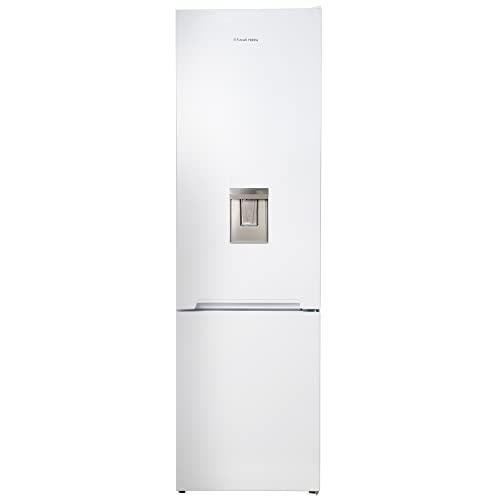
Refridgerators Uk
Add a review FollowOverview
-
Founded Date July 14, 1930
-
Sectors Technology
-
Posted Jobs 0
-
Viewed 37
Company Description
9 . What Your Parents Taught You About Fridge UK
The Comprehensive Guide to Refrigerators in the UK
Fridges are an important device in every household, serving a crucial role in food preservation and security. The UK market uses a varied variety of fridge types, sizes, features, and brands. This short article intends to supply an extensive understanding of fridges offered in the UK, including their functions, energy efficiency, and aspects to think about when purchasing.
Types of Refrigerators Available in the UK
When trying to find a refrigerator, it is necessary to understand the numerous types readily available. Each type comes with its own set of features and functions, catering to various requirements and preferences. The most typical types of refrigerators discovered in the UK consist of:

1. Top Freezer Refrigerators
- Description: The traditional style, featuring the freezer compartment on top.
- Pros: More affordable, spacious, simple access to fresh food.
- Cons: Limited freezer space, the top may be less convenient for bulk items.
2. Bottom Freezer Refrigerators
- Description: Freezer lies at the bottom, allowing simpler access to fresh food.
- Pros: Greater benefit, better exposure of fresh products.
- Cons: Usually more pricey, some might deal with big frozen products.
3. Side-by-Side Refrigerators
- Description: Features 2 vertical compartments, one for the Fridge uk and one for the freezer.
- Pros: Ample storage space, simple to access both frozen and fresh foods.
- Cons: Wider footprint, they may not fit in smaller sized cooking areas.
4. French Door Refrigerators
- Description: Combines features of bottom freezers and side-by-sides, with two doors for the fridge on top.
- Pros: Stylish style, roomy, and typically consists of advanced features.
- Cons: Higher cost point, lines up badly with smaller sized kitchen designs.
5. Compact Refrigerators
- Description: Smaller models developed for minimal spaces.
- Pros: Ideal for studio apartments or workplaces, energy-efficient.
- Cons: Limited storage capability, might lack functions.
6. Integrated Refrigerators
- Description: Designed to mix effortlessly with kitchen cabinets.
- Pros: Custom fit, visual appeal, increases home value.
- Cons: Higher cost, may offer less flexibility in placement.
7. Smart Refrigerators
- Description: Equipped with Wi-Fi and clever innovation functions.
- Pros: Advanced features like touch screens and internal electronic cameras.
- Cons: Expensive, more complicated to repair.
| Refrigerator Type | Availability | Typical Price Range | Energy Efficiency |
|---|---|---|---|
| Top Freezer | Moderate | ₤ 300 – ₤ 600 | Average |
| Bottom Freezer | High | ₤ 400 – ₤ 800 | Above Average |
| Side-by-Side | Easy | ₤ 800 – ₤ 1500 | Differs |
| French Door | High | ₤ 800 – ₤ 2000 | High |
| Compact | Minimal | ₤ 200 – ₤ 500 | Average |
| Integrated | Custom-made | ₤ 1000 – ₤ 2500 | High |
| Smart | Variable | ₤ 1200+ | High |
Key Features to Consider
- Energy Efficiency: Look for designs that are energy-efficient. In the UK, appliances are ranked from A (most effective) to G (least efficient). An A+ ranking and above can result in substantial energy cost savings.
- Capacity: Choose a fridge with sufficient capacity for your household. A standard guideline is 100-200 liters per person.
- Noise Level: Consider designs that run quietly, particularly if the cooking area is near living areas.
- Cooling Technology: Features like frost-free innovation deserve the financial investment, as they lessen maintenance.
- Adjustable Shelves: Having adjustable racks enhances the flexibility to save larger products.
- Temperature level Control: Check for user friendly temperature controls and zones for various kinds of food.
- Style: Choose the design and color that matches your kitchen aesthetic, whether you choose a modern-day stainless-steel appearance or a traditional retro finish.
Purchasing Tips
- Identify Your Needs: Consider your cooking routines, family size, and cooking area area.
- Set a Budget: Refrigerators can be found in various price ranges. Establish a budget before you start going shopping.
- Research Study Energy Ratings: Invest in energy-efficient models to save money on utility bills.
- Read Reviews: User experiences can supply insights into dependability and performance.
- Compare Brands: Some brand names are understood for their toughness while others might provide more innovative functions.
Often Asked Questions (FAQs)
1. How long do refrigerators generally last?
- Refrigerators normally last between 10 to 20 years, depending upon the brand and how well they are preserved.
2. Are there any maintenance suggestions for prolonging the life of a refrigerator?
- Routinely tidy the coils, check the door seals, and regularly thaw if necessary to maintain ideal efficiency.
3. What is the best size refrigerator for a family of four?
- For a household of 4, a refrigerator with a capacity of around 400-600 liters is usually enough.
4. Do I require to stress over energy intake when purchasing a refrigerator?
- Yes, energy consumption is essential. Search for systems with high energy effectiveness scores to minimize regular monthly expenses.
5. Should I pick a fridge with a water and ice dispenser?
- This feature can be practical, particularly for families. However, it may require more upkeep than basic models.
Acquiring a refrigerator is a significant choice for any family in the UK. With numerous types available, each with its special features and advantages, it is crucial to examine individual requirements before making an option. By thinking about elements such as energy performance, capability, and design looks, consumers can choose a fridge that lines up well with their lifestyle, ultimately improving their cooking area experience while safeguarding food quality and freshness.
